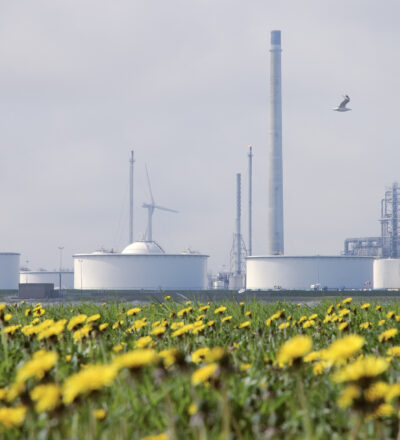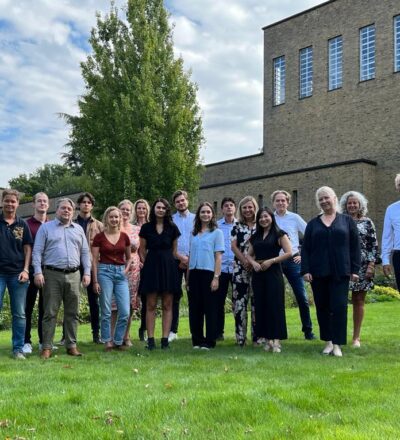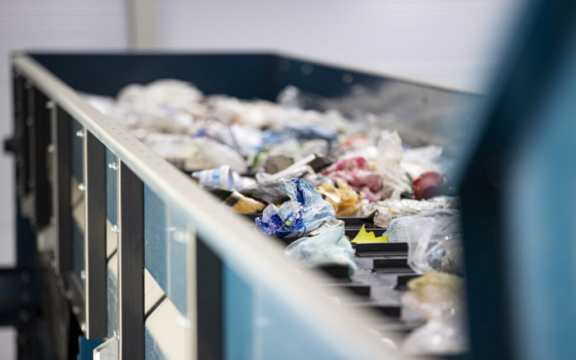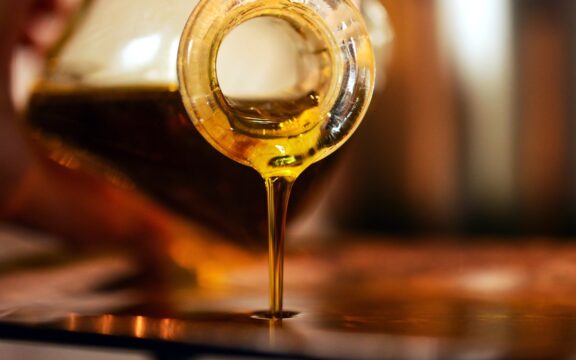The raw materials transition (or resources transition) is about reducing dependency on fossil resources. This includes finite mineral resources, like metals for cars and phones, phosphate for fertilizers, and oil and gas for making plastics. The materials transition aims for a circular economy, using resources and products more efficiently to minimize natural resource use and environmental impact during production, usage, and disposal phases.
In essence, the materials transition is a completely different transition than the energy transition. The materials transition is not about replacing resources, but about building a fundamental new structure of the economy. That is a more complex transition than the energy transition.
In this new economy we have to transform our value chains. For instance, carbon and plastics will no longer be waste products but valuable resources. In establishing the future circular economy, the relevance of industry – and in particular the process industry – cannot be underestimated.
From linear to circular
In our contemporary society, the majority of resources are still used for products that we use for a short period of time, and then discard. There is widespread agreement that this linear system based on a ‘take-make-waste’-model is no longer sustainable. A transition to circular use of materials, water, nutrients, and carbon, combined with minimal loss of natural resources, is necessary. Only then our climate can recover.
This means we need to transition to a circular economy, in which resources are kept in use for as long as possible while obtaining maximum value from their usage. When products at the end of their lifespan are chemically degraded, the constituting molecules can re-enter the product cycle. Achieving this requires innovation in technology for production, recycling and re-use, powered solely by renewable energy.
This requires close cooperation between sectors of industry that until now have been operating independently. To achieve this we need everyone. And that is a fundamentally different approach. It’s no longer about separate process innovations, but about a system innovation in which we close the chain together.
Our integrated approach to energy and materials transition
The energy and materials transitions are interlinked, since a circular economy requiring much sustainable and clean energy. The Social Economic Council (SER) of the Netherlands recommends an integrated approach to these transitions, emphasizing that they are equally important and must be tackled together.
We believe the Netherlands has the opportunity to lay the groundwork for a circular industry, paving the way for a thriving economy, increased employment, and a hotbed of innovations. We’ll explain this further in our integrated vision on the 3 major transitions.
ISPT and materials transition
For the process industry, ISPT identifies 3 key technological solutions for the materials transition and a circular economy:
- More recycling
- Increased use of biobased resources
- Utilizing captured CO2 as raw materials
ISPT, a leading independent institute for open innovation in the process industry, collaborates with companies and research institutions to generate knowledge and insights for a circular and climate-neutral process industry by 2050. Its principles include independence, interdisciplinary cooperation, expertise, and mutual trust.
Also interesting to read: How the process industry could address the scarcity of rare earth elements for a sustainable future
Circularity of waste
As part of the circular economy, there is an increasing interest in converting waste streams into feedstock and energy carriers. We aim to match under-utilized residual streams with the most suitable conversion technologies.
Therefore, many ISPT projects are aimed at achieving circularity at an operations level, focusing on the efficient use of resources and energy. An important aspect here is the prevention, reduction and recycling of waste.
Also interesting to read: Welke technologie is nodig voor een circulaire economie?
Circularity of plastics
In the field of chemicals and plastics, ultimate circularity lies at the molecular level. When products at the end of their lifespan are chemically degraded, the constituting molecules can re-enter the product cycle. This requires new technology for production, recycling and re-use, powered by renewable energy.
Plastic is the most visible waste on the planet, but alternatives contribute more to CO2-pollution. Plastic is far too valuable to be treated as waste. It can serve as the feedstock for circularity. Our program on Circular Plastics (CPI) is dedicated to advancing circularity in plastic usage on an industrial scale, recognizing the material’s value and the environmental issues it poses, like litter and pollution.
To transition from a linear, fossil fuel-based production system to a circular model where plastics are made from recycled materials, thereby reducing CO2 emissions, the CPI has created the Circular Plastics Roadmap. This roadmap, developed with industry and academic experts, not only provides a timeline but also a vision for a sustainable future with responsible plastic use.
Circularity of carbon
How do we transform carbon from single use to circular use without CO2 emissions, at low cost and on an industrial scale? In the program on Circular Carbon we’re developing viable pathways for circular carbon use in carbon intensive industries.
Recognizing carbon as the backbone of modern industry but also a major contributor to climate change, the program explores alternative energy sources and non-fossil carbon feedstocks. It aims to develop feasible strategies for managing and reducing emissions in carbon-intensive industries. The program considers three alternative carbon sources: biomass (renewables), atmospheric CO2, and recycled carbon from waste streams, to create a sustainable, circular approach to carbon usage.
Closing the carbon cycle in the Steel2Chemicals project is a prime example of this.
Also interesting to read: White Paper: the potential for circular carbon in the Dutch industry
Circularity of heat
The concept of circular heat is to develop and apply sustainable heat technologies for 100% CO2-free industrial heating, aligning with Climate Agreement targets.
This is critical as heat is the largest energy consumer in various sectors like agro-food, paper, chemical, and food. Achieving 2030 and 2050 targets necessitates collaborative knowledge and experience sharing. Our Heat-program focuses on heat reuse, system concepts for heat and cold, maximizing process efficiency, deep geothermal energy, and climate-neutral fuels.
Liquid separation techniques for circularity
We believe that a focus on intensification and electrification of the separation and treatment of liquids and gases, will lead to energy-efficient production and the recovery and reuse of valuable components.
The program Separations for circularity focuses on membrane and affinity-based separations, alternative driving force-based separations, integrated fluid treatment and conversion, as well as water reuse and resource recovery. We are developing versatile platform technologies that are cost-effective, robust, and future-proof, with the aim of enabling at least a 49% reduction in CO2 emissions by 2030 in comparison to 1990, as set forth in the central goal of the Climate Agreement by the Dutch government.
Circularity of nutrients
The Fascinating program, is focusing on using agricultural waste like cellulose and manure as resources for the chemical industry or non-fossil fuels.
The study encompasses various stages, from the depletion of agricultural land to food processing and waste collection. Collaborating with the fertilizer and food industries, ISPT aims to develop a scientifically robust foundation to address the complexities and promote circularity in the food value chain.
Netherlands’ circular performance
According to the Dutch Central Bureau for Statistics (CBS), 13% of the materials used in the Dutch economy in 2020 were recycled, almost unchanged since 2014.
The Circle Economy Foundation in Amsterdam reports only 7.2% of the global economy is circular, a decrease from 9.1% in 2018, indicating increased raw material extraction and lagging recycling. However, the Netherlands is a leader in circularity, with 24.5% of its economy circularly structured.
In summary, the Netherlands is actively working towards both energy and materials transitions, aiming for a more circular and sustainable economy with ISPT playing a crucial role in these efforts.
ISPT and the materials transition
The Institute for Sustainable Process Technology (ISPT) operates independently and on a non-profit base. Through extensive collaborations with companies and academic institutions, we acquire knowledge, data, and insights vital in realizing the ultimate objective: a circular and climate-neutral process industry by 2050.
ISPT serves as a platform and network organization, and has a significant impact in the realm of the raw materials transition, as well as the energy transition and sustainable agriculture.
We feel at home in complex projects involving multiple actors and stakeholders.




